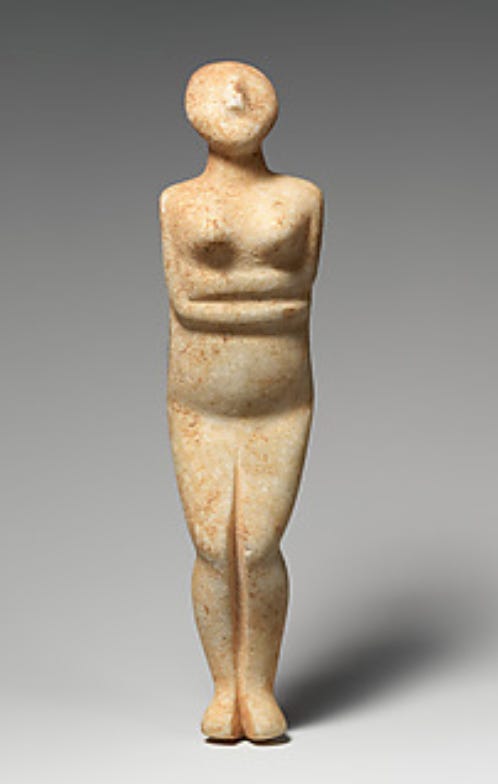Marble female figure, Cycladic, 2700–2600 BCE
Duro Jaiye
spring rain—
milk in her left breast
unexpectedly sweeter
Peggy Willis Lyles
the numbness
of scar tissue—
forsythia
Fay Aoyagi
Independence Day—
I let him touch
a little bit of me
Carol Purington
Logging road—
the pileated woodpecker
flings its cry ahead
Yoshino Yoshiko
as if mending
socks, I repair my mind
and live on
Creative Invitation
Haiku can be called "unfinished" poems: each spare haiku invites the reader to finish it in their mind and heart, to bring the meaning.
One of my favorite books is Japanese Death Poems—Written by Zen Monks and Haiku Poets on the Verge of Death. Here is a free pdf of the book for your enjoyment.
Japanese, originally a pictographic language, uses characters to represent things and ideas visually instead of letters forming words.
Write a haiku that’s entirely visual, describing the world you see, a moment in nature, or a single image, in three lines. Don’t worry about syllable count. Bring the fleeting moment alive.





Waves rolling
Thoughts vying
I smell the sea